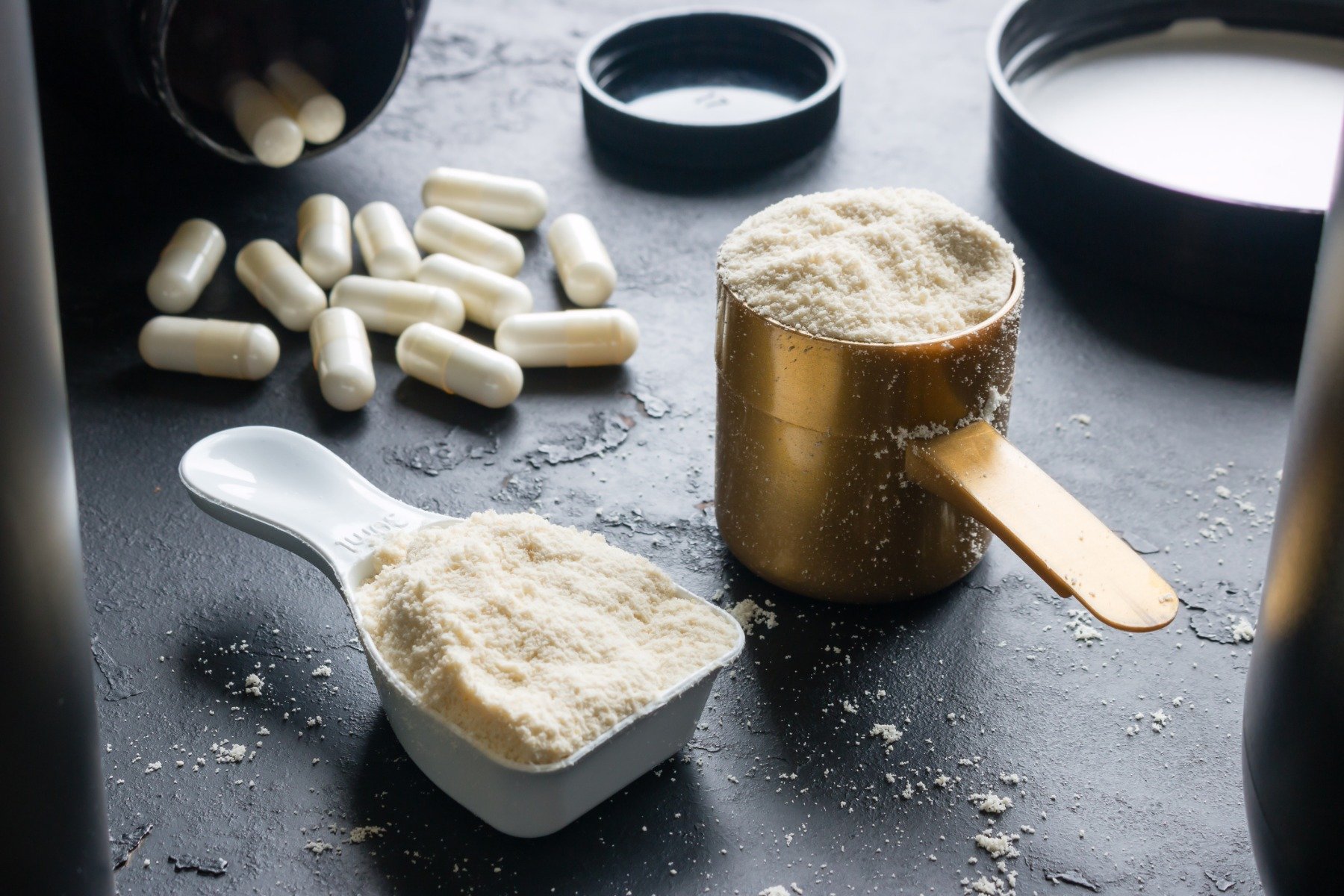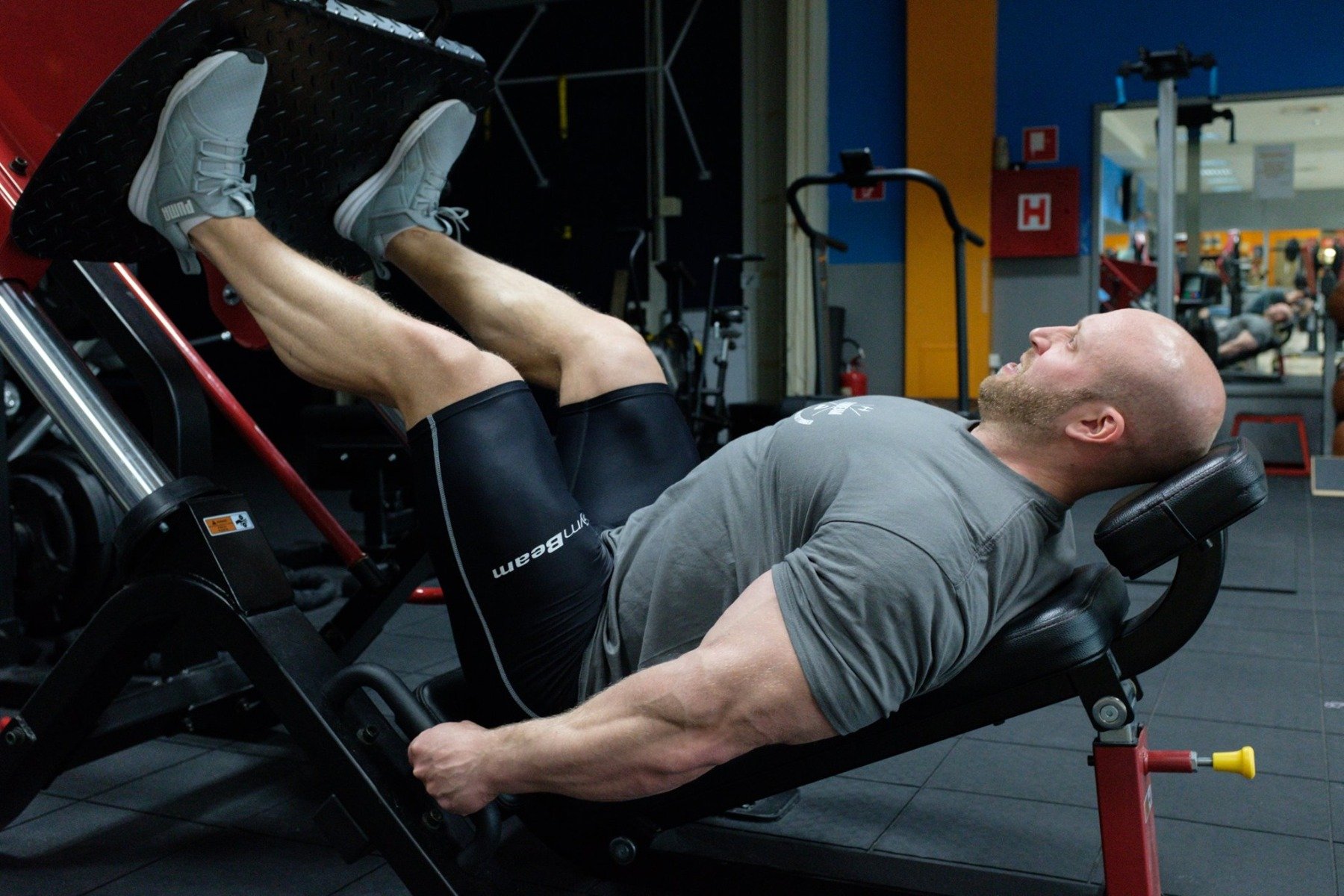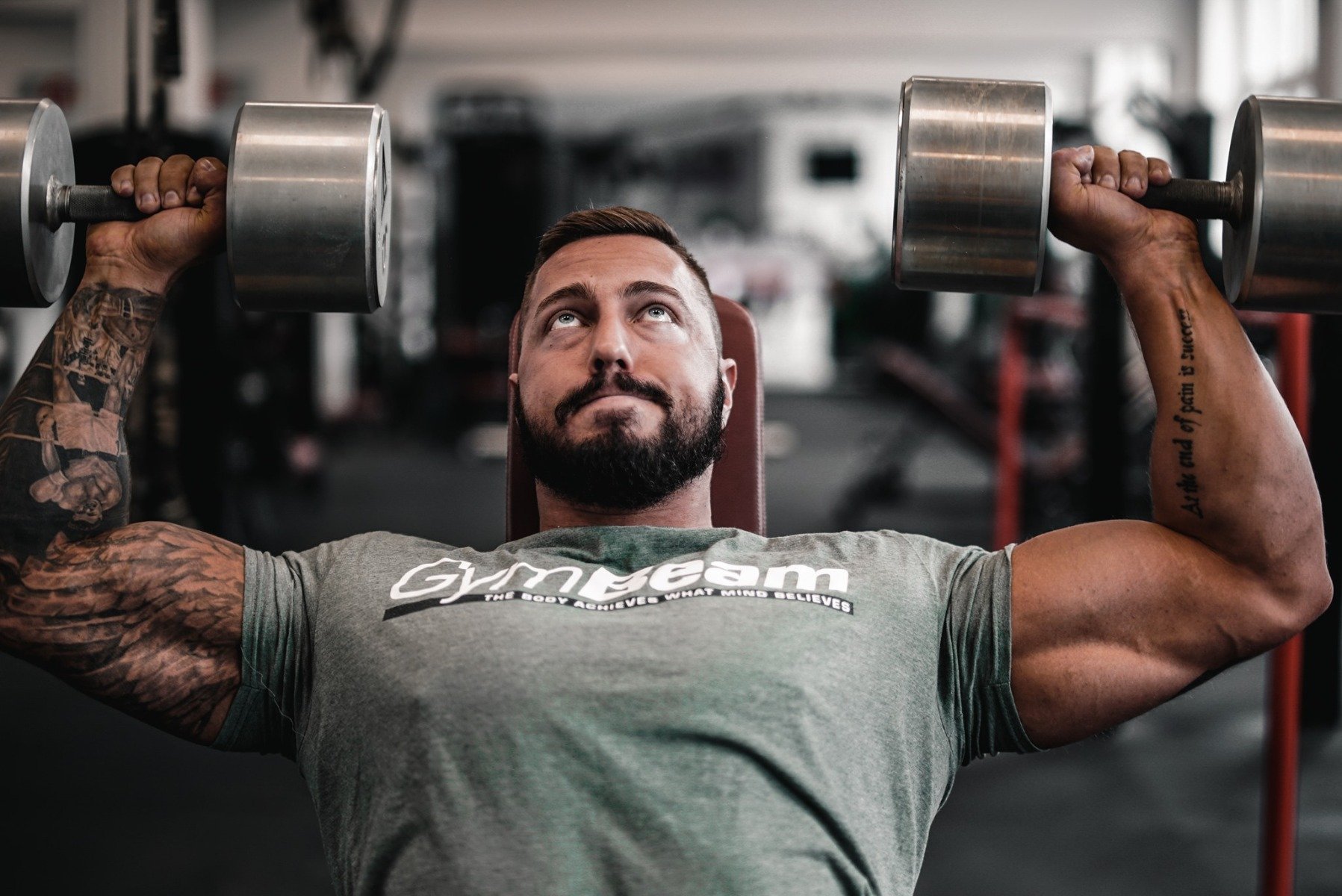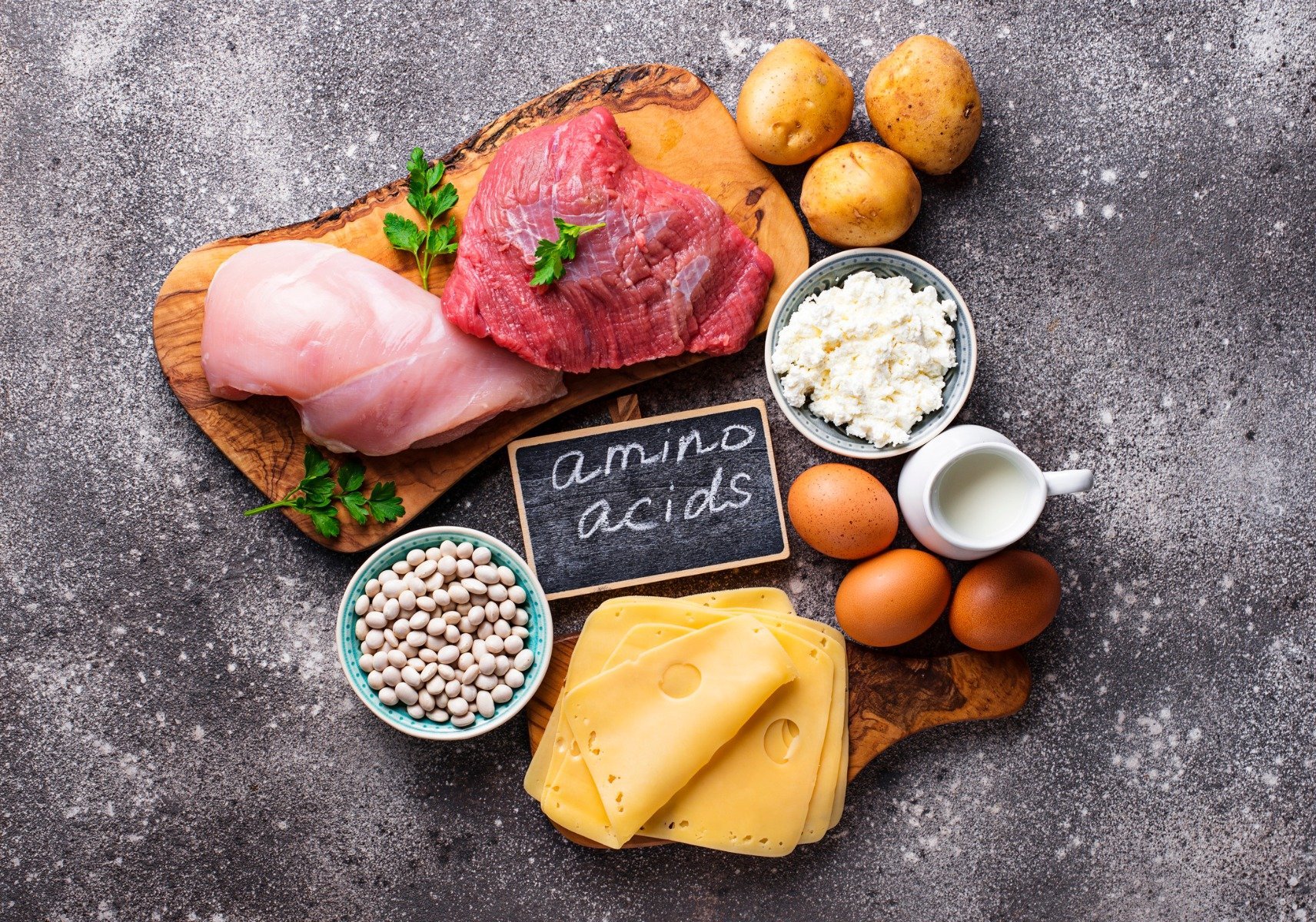Table of Contents
Do you know what BCAA and EAA have common? Read the article on why essential amino acids are a body building unit and an important part of athletes’ diet. You will learn what amino acids are essential, how to dose and use them to achieve your fitness goals. Essential amino acids already symbolically indicate by their attribute of being “essential” that they are just indispensable for our body. Before we get to the individual essential amino acids and their effects, let’s take a closer look at the importance of the amino acids for our body and their classification.
What are amino acids?
Amino acids are structural units containing nitrogen, carbon, hydrogen, oxygen together with a variable group of side chains that form peptides and proteins. They represent 75% of net body weight, 95% of muscles, including heart muscle. In addition, 100% of the hormones, neurotransmitters, are produced from amino acids. [3]

In our DNA, 20 amino acids are encoded, involved in protein synthesis, of which 9 are essential. This means that nine essential amino acids (or EAA) must be taken from diet or supplements. [1] Amino acids are divided into essential and non-essential, or conditionally essential amino acids. If just one essential or non-essential amino acid is missing in the body, the remaining 19 amino acids are practically unusable. They become catabolic, which in turn leads to a negative nitrogen balance. [4]
Essential amino acids include [2]:
- histidine
- isoleucine
- leucine
- lysine
- methionine
- phenylalanine
- threonine
- tryptophan
- valine
Essential amino acids vary depending on type and age. Therefore, only 8 amino acids, without histidine, are considered essential by some experts. However, most of the scientific community works with the number of 9 essential amino acids, including histidine. [3]

Non-essential amino acids are those that the body can produce itself, even if it is not taken from the diet. We include here the following amino acids: alanine, arginine, asparagine, aspartic acid, cysteine, glutamic acid, glutamine, glycine, proline, serine and tyrosine. [2]
Conditionally essential amino acids are not usually essential unless the body is exposed to disease or stress. This category includes arginine, cysteine, glutamine, tyrosine, glycine, ornithine, proline and serine. [2]
You might be interested in these products:
Essential amino acids and their effects
The basic difference between essencial amino acids and the remaining amino acids is that we need to receive them from external sources. This means that our diet should be balanced and complemented by each of the essential amino acids. Why? We will explain it on the individual effects of particular essential amino acids in the human body.
1. Lysine
Lysine plays an important role in muscle building, maintenance of bone strength, regeneration after injury or surgery. At the same time, it regulates the production of hormones, antibodies and enzymes in the body. It may also have antiviral effects and is required for energy generation, immune function, and collagen and elastin production. [5] [6]

2. Histidine
Histidine facilitates growth, blood cell formation and tissue repair. It also helps to maintain a special protective cover over the nerve cells called myelin sheath. The body metabolizes histidine to histamine, which is essential for immunity, reproductive health and digestion. The results of a study involving women with obesity suggest that histidine supplements may reduce BMI and insulin resistance. Histidine deficiency can cause anaemia and low blood levels in people with kidney disease or arthritis. [5] [7] [8]
3. Threonine
Treonin is essential for healthy skin and teeth because it is part of enamel, collagen and elastin. It helps in fat metabolism and can be beneficial for people with digestive disorders, anxiety and mild depression. [5] [9]
4. Methionine
Methionine together with the non-essential cysteine amino acid are essential for skin and hair health and flexibility. Methionine also helps to maintain strong and firm nails. It contributes to the proper absorption of selenium and zinc and the removal of heavy metals such as lead and mercury. [5] [10]
5. Valine
Valine is essential for mental health, muscle coordination and emotional peace. Athletes use valine supplements for muscle growth, tissue regeneration and energy supplementation. Its deficiency can cause insomnia and decreased mental function. [5] [11]

6. Isoleucine
Isoleucine helps in wound healing, promotes immunity and regulates blood sugar and hormone production. It is primarily present in muscle tissue and controls energy levels. Older people may be more prone to isoleucine deficiency than younger people, which may cause muscle loss and hatter’s shakes. [5] [12]
7. Leucine
Leucine is an important amino acid in protein synthesis. At the same time, it regulates blood sugar levels and promotes growth and regeneration of muscles and bones. It is also essential for wound healing and growth hormone production. Leucine deficiency can lead to skin problems, hair loss and fatigue. [5] [13]
Leucine, isoleucine and valine are branched chain amino acids known as BCAA. These have specific roles in the body, including protein synthesis, energy production, and the formation of other amino acids.
8. Phenylalanine
Phenylalanine helps the body to use other amino acids as well as proteins and enzymes. The body converts phenylalanine to tyrosine, which is essential for proper brain function. It is also a precursor of the neurotransmitters like dopamine, epinephrine and norepinephrine. Phenylalanine deficiency is rare but may cause eczema, fatigue and memory problems. [14]
Interestingly, people with a genetic disorder called phenylketonuria are unable to metabolize phenylalanine. Such persons must then avoid diet with too high values of phenylalanine.
9. Tryptophan
Tryptophan is essential for proper growth of infants and is the starting material for the formation of serotonin and melatonin. Serotonin is a neurotransmitter that regulates appetite, sleep, mood, and pain. Melatonin also regulates sleep and is a part of multiple sleeping products. [5] [16]
One study suggests that tryptophan supplementation can improve emotional processing in healthy women. On the contrary, its deficiency causes pellagra, a disease that can lead to dementia, skin rashes and digestive problems. [5] [15]
From the above-mentioned effects of EAA, see that essential amino acids are the basis for the health and proper functioning of the organism. Although amino acids are most often associated with the growth and build-up of muscle mass in athletes, the body is much more dependent on them. This is why we should not neglect their dietary intake. Their deficiency may negatively affect overall health, including the nervous, reproductive, immune and digestive systems.
Essential amino acids and athletes
One of the key tasks of essential amino acids is their influence on muscle growth. Many of the EAAs are involved in protein synthesis, not only the essential amino acids BCAA. They do this through their ability to activate the mTORC1 pathway. If you are doing fitness, you may have already heard of the mTOR protein, which effectively stimulates protein synthesis. MTORC1 includes not only mTOR but also other processes related to muscle protein synthesis. [20]

The mTORC1 pathway controls anabolic and catabolic skeletal muscle signalling, regulates muscle growth and muscle breakdown. This is confirmed by research that has shown that refilling essential amino acids in conjunction with resistance training has an additive effect on stimulating protein synthesis compared to training. [18] [19]
This basically means that EAA can help you maximize the success of your fitness goals by stimulating muscle protein synthesis. This in turn leads to muscle growth or minimizes muscle loss.
Sources of essential amino acids
Because our body is unable to form essential amino acids, it is important to supplement them within the diet. Fortunately, there are many common foods that contain enough essential amino acids. Foods in which we find all 9 essential amino acids are also referred to as complete proteins. These include meat, fish and seafood, poultry, eggs and dairy products. From plant sources, it includes the whole set of essential amino acids soy, quinoa and buckwheat. The remaining plant sources, such as nuts or legumes, are not considered complete proteins because they do not have one or more essential amino acids.
If you are a vegan and your diet is varied, you can ensure the proper intake of all essential amino acids. For example, selecting different types of legumes, nuts, and seeds, or vegetables will help you meet the daily needs of essential amino acids even without animal products. However, you can always add them through EAA nutritional supplements. [17]

The table provides you with an overview of essential amino acids and their sources. [5]
| Lysine | meat, eggs, soy, black beans, quinoa, pumpkin seeds |
| Histidine | meat, fish, poultry, nuts, seeds, grains |
| Threonine | cottage cheese, wheat germ |
| Methionine | eggs, grains, nuts, seeds |
| Valine | soy, cheese, peanuts, mushrooms, grains, vegetables |
| Isoleucine | meat, fish, poultry, eggs, cheese, lentils, nuts and seeds |
| Leucine | dairy products, soybeans, legumes |
| Phenylalanine | dairy products, meat, soy, fish, beans, nuts |
| Tryptophan | wheat germ, cottage cheese, chicken and turkey |
Daily dose of essential amino acids
You already know that EAA is important for athletes, not only for their health, but also for achieving fitness goals. The recommended daily dosage of essential amino acids has been determined by the World Health Organization as follows [21]:
| Histidine | 10 | 700 |
| Isoleucine | 20 | 1400 |
| Leucine | 39 | 2730 |
| Lysine | 30 | 2100 |
| Methionine + cysteine | 10,4 + 4,1 (together 15) | 1050 (together) |
| Phenylalanine + tyrosine | 25 (together) | 1750 (together) |
| Threonine | 15 | 1050 |
| Tryptophan | 4 | 280 |
| Valine | 26 | 1820 |
We have summarized all the essentials that EAA athletes should know. Indeed, these essential amino acids are the path to health and desired figure. Therefore, please write us comments on the sources from which you receive EAA most frequently. If our post was useful for you, don’t hesitate to support it by sharing.
[1] Kamal Patel - Amino Acids – https://examine.com/supplements/amino-acid/
[2] Medline Plus - Amino Acids – https://medlineplus.gov/ency/article/002222.htm
[3] Rosane Oliveira - The essentials - Part One – https://ucdintegrativemedicine.com/2016/02/the-essentials-part-one/#gs.k4fjit
[4] Science Direct - Essential Amino Acids – https://www.sciencedirect.com/topics/medicine-and-dentistry/essential-amino-acid
[5] Jennifer Berry - What to know about essential amino acids – https://www.medicalnewstoday.com/articles/324229.php
[6] U.S. National library of Medicine - Lysine – https://pubchem.ncbi.nlm.nih.gov/compound/L-lysine
[7] R. N. Feng, Y. C. Niu, X. W. Sun, Q. Li, C. Zhao, C. Wang, F. C. Guo, C. H. Sun - Histidine supplementation improves insulin resistance through suppressed inflammation in obese women with the metabolic syndrome: a randomised controlled trial – https://link.springer.com/article/10.1007%2Fs00125-013-2839-7
[8] U.S. National library of Medicine - Histidine – https://pubchem.ncbi.nlm.nih.gov/compound/L-histidine
[9] U.S. National library of Medicine - L-Threonine – https://pubchem.ncbi.nlm.nih.gov/compound/L-threonine
[10] U.S. National library of Medicine - Methionine – https://pubchem.ncbi.nlm.nih.gov/compound/L-methionine
[11] U.S. National library of Medicine - Valine – https://pubchem.ncbi.nlm.nih.gov/compound/L-valine
[12] U.S. National library of Medicine - L-isoleucine – https://pubchem.ncbi.nlm.nih.gov/compound/l-isoleucine
[13] U.S. National library of Medicine - Leucine – https://pubchem.ncbi.nlm.nih.gov/compound/L-leucine
[14] U.S. National library of Medicine - Phenylalanine – https://pubchem.ncbi.nlm.nih.gov/compound/L-phenylalanine
[15] M. H. Mohajeri, J. Wittwer, K. Vargas, E. Hogan - Chronic treatment with a tryptophan-rich protein hydrolysate improves emotional processing, mental energy levels and reaction time in middle-aged women – https://www.cambridge.org/core/journals/british-journal-of-nutrition/article/chronic-treatment-with-a-tryptophanrich-protein-hydrolysate-improves-emotional-processing-mental-energy-levels-and-reaction-time-in-middleaged-women/AB54DC8C47AF5C589B87EDD30B382386
[16] U.S. National library of Medicine – Tryptophan – https://pubchem.ncbi.nlm.nih.gov/compound/L-tryptophan
[17] Michelfelder AJ - Soy: a complete source of protein – https://www.ncbi.nlm.nih.gov/pubmed/19145965
[18] Kevin D Tipton, Steven E. Wolf, Elisabet Borsheim, Arthur P. Sanford - Acute response of net muscle protein balance reflects 24-h balance after exercise and amino acid ingestion – https://www.researchgate.net/publication/11074043_Acute_response_of_net_muscle_protein_balance_reflects_24-h_balance_after_exercise_and_amino_acid_ingestion
[19] Elisabet Borsheim, Kevin D. Tipton, Steven E. Wolf, Robert R. Wolfe - Essential amino acids and muscle protein recovery from resistance exercise – https://www.physiology.org/doi/full/10.1152/ajpendo.00466.2001
[20] Kris Gethin - What lifters need to know about essential amino acids – https://www.bodybuilding.com/content/what-lifters-need-to-know-about-essential-amino-acids.html
[21] World Health Organization - Protein and amino acid requirements in human nutrition – https://apps.who.int/iris/bitstream/handle/10665/43411/WHO_TRS_935_eng.pdf;jsessionid=4EBC7C8A1A18928BB135996F00E8324A?sequence=1


Add a comment